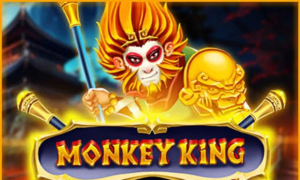Follow the Tiers
This is the most important concept when reading my handicapping picks. The horses are grouped into colour coded tiers. The tier colours are displayed as the background color of each horse’s program number. The colours range from dark green to yellow.
The grey tier is a special tier which means I did not rate that particular horse. Although, the grey tier is listed at the bottom, this DOES NOT indicate that this is a bad horse. It is a rare occurrence that a horse is unrated. It is usually due to a lack of data for foreign horses. Examine these horses manually to see if they pose a threat.
Within a given tier, the horses are ranked from best to worst. However, usually the horses within a tier are close in ability and it is difficult to choose one over another. For single race bets (e.g. Exacta, Trifecta), I would key or box the horses in this first (dark green tier). For multi-leg bets (e.g. Pick 3, Pick 4), I take all the horses in the top tier. Sometimes, depending on the circumstances, I add one or two horses from the second tier or from the grey tier.
Handpick Your Races
Although I am successful at predicting many races, it is common sense that you must be selective when choosing the races to bet. You will not be as successful if you bet every possible race. Typically, I look for races with smaller top tiers (one or two horses in the tier). I also skip races if there are one or more horses in the grey tier.
It Takes Money to Win Money
While you should handpick your races to conserve your bankroll, be prepared to commit enough money to make a proper bet when you find a race you like. Exotic wagers such as Pick 4s, Pick 6s and Superfect as usually require a significant outlay to have a realistic chance of hitting the bet. I cannot tell you how many times eliminating one or two horses from your combination to try to save a couple of bucks has cost a bettor hundreds or thousands of dollars in lost winnings. If you cannot afford to outlay enough funds for the more exotic bets, stick to simpler bets such as Win/Place/Show, Exactas/Quinellas and Doubles.
Workouts, Workouts, Workouts
Besides my selections themselves, workouts are the second most important gauge of a horse’s ability. Past performances indicate a horse’s basic ability. Recent workouts are an indication of a horse’s current form. When choosing between two horses with similar past ability, the horse in the best current form will often prevail.
We analyze the quality of workouts for you. Workouts highlighted in red are quality workouts. In addition, if you see the “Monster Workout” icon for a horse, keep an eye out! Click here (or view the right sidebar) for the description of the icons on the prediction form.
Turf vs. Dirt
Horses are either main track horses or turf horses, not both. It is very rare that a horse will run well on both surfaces. Breeding plays a major factor here, as there are physical aspects of a horse which make the horse better on the turf or dirt. I will discuss this in further depth in a later article.
It is enough to know that if a horse looks terrible on the dirt (but has shown some promising short distance workouts), there’s a good chance the horse will perform well on the turf. A horse that is predisposed for turf can look like a completely different horse when moving from the main track to the turf. The same goes for horses that are terrible on the turf. They may prefer a dirt course. For first time turf starters, I incorporate a pedigree analysis and rate these horses accordingly.
Another way to gauge if a horse will like the turf is to see if the horse ever ran on a wet dirt track (Good, Muddy, or Sloppy). If the horse ran significantly better on the off track than a Fast track, the horse may take well to the turf.
Track Condition
It always amazed me that most handicappers never take track condition into consideration. This is a HUGE factor. Similar to the dirt vs. turf issue, some horses prefer a dry track while others prefer a wet track. This applies on the dirt as well as on the turf. In fact, this is often the case with European turf horses. The turf courses in Europe are frequently soft, and European horses usually don’t run as well on a firm course here in the States.
A simple way to determine if a horse likes an off track, is to check his Wet record on my tip sheet or look at the horse’s individual past performances on a wet track. Luckily, I do the analysis for you for all track conditions. In addition, I also analyze turf races for the dirt (just in case they come off the turf due to inclement weather).
Simply select the dirt and turf conditions on my predictions form to reflect the current conditions. It is important to change your selections during the racing day, if the track condition changes. If turf racing is moved to the main track, simply choose OFF as the turf condition. You will then see my dirt selections for all turf races for the dirt track condition you have selected. Sometimes racing may come off the turf but one big turf stakes race will remain on the grass. In this case, first you select the current turf condition. Then, go to each individual turf race and you can override the surface to Dirt for the races that came off. Simply leave the surface set to Turf for the turf races that remained on the grass.
Class Dropdowns
Another thing to watch for are horses that are dropping in class. Horses that are significantly dropping in class from their last race, are usually a threat. Some examples of significant class drops are: Maiden Special Weight to cheap Maiden Claiming, Claiming to another Claiming with a significantly lower claiming price, Allowance to Claiming and Graded Stakes to Allowance or Claiming.
To determine if a horse is going up or down in class, simply look at the very right of the horse’s section on my picks sheet. If you see a green down arrow, which means the horse is dropping in class. A red up arrow means moving up in class. The class comparison is based on the horse’s last race on the SAME surface as the current race. Click here (or view the right sidebar) for the description of the icons on the prediction form. You can also see the class of the last race run by looking at “Prev Race:” on my tip sheet. This is simply a quick indication of the track, class, and finish position of the horse in his last race (e.g. 3/7 means the horse finished third out of 7 horses). Of course, if you want to see the past performance in detail, view the past performance matrix.
Layoffs
Layoffs are important in the following two ways:
If a horse hasn’t raced for more than 45 days since his last race, the horse is currently laid off. Horses that are significantly laid off, tend to not perform to their normal standards because they need a race to get back on track (no pun intended). However, the importance of layoffs varies from track to track. At tracks with better horses (e.g. Aqueduct, Gulfstream Park, Hollywood Park), even a short layoff can transform a horse from a contender to a loser. However at tracks with cheaper horses, horses can win their first race back from a long layoff.
If a horse’s last race was coming off a layoff, the horse is bound to improve this time out. The past race was “needed” and will usually not indicate the horse’s true ability. In the past performance section if a race was coming back from a layoff, I highlight the date of the past performance in red.
Medication Change
There are essentially two kinds of medication given to racehorses, Lasix and Bute. Bute is only legal at certain tracks (typically on the West Coast).
Any horse that is using Lasix for the first time will almost always improve. I indicate this on my tip sheet with a special icon. Click here (or view the right sidebar) for the description of the icons on the prediction form.
On the other hand, Bute is very different. A horse either needs Bute to run well, or can’t run at all with Bute. By looking at a horse’s past performances, you can tell if they run better with or without Bute. The medication column on the past performance is indicated by a ‘B’ if the horse was using Bute. If a horse runs well with Bute and now is off Bute (I use an icon to indicate this), the horse will typically run down and run a terrible race. However, if a horse has always ran with Bute and didn’t do well, the horse may run a big race the first time running without Bute.
Jockey/Trainer Change
Many racing enthusiasts make the mistake of betting a particular jockey. It is true that jockeys may have significantly different winning percentages. However, these people do not realize that the most popular jockeys also get the best mounts. A jockey cannot make a horse run better than the horse’s natural ability. Conversely, a jockey can ruin a horse’s chance to win by giving the horse a bad ride. It is the case, however, that some jockeys “know” how to ride a particular horse better. By looking at the horse’s past performance matrix, you can see which jockeys typically rode the horse well. I personally put minimal weight on the rider of the horse.
Keep this in mind: If you give the best jockey the worst horse, he/she won’t hit the board. However, if you give the worst jockey the best horse, chances are he/she will hit the board and possibly even win the race.
Nevertheless, when there is a change of jockey, I highlight it on my selections form. I show the past jockey’s record at the track the horse last raced, and the current jockey’s record at the current track. If the record has a star next to it, that means the data was not accurate and I had to estimate the jockey’s record for that track.
Trainer changes can make a big difference, especially over the span of the horse’s next few races. Simply, you can compare the records between the previous and current trainers. Again, if there is a change, I highlight it on my selections form. If the record has a star next to it, that means the data was not accurate and I had to estimate the trainer’s record for that track.









